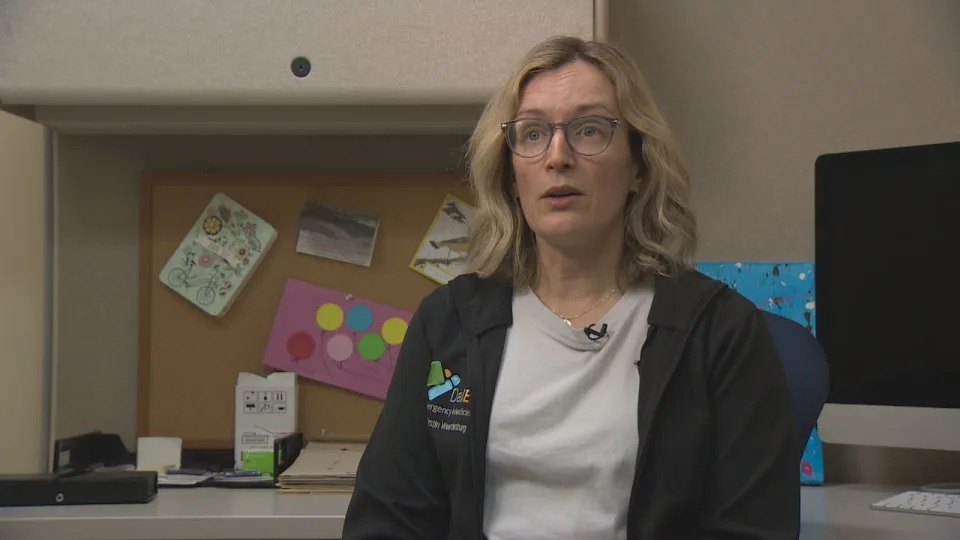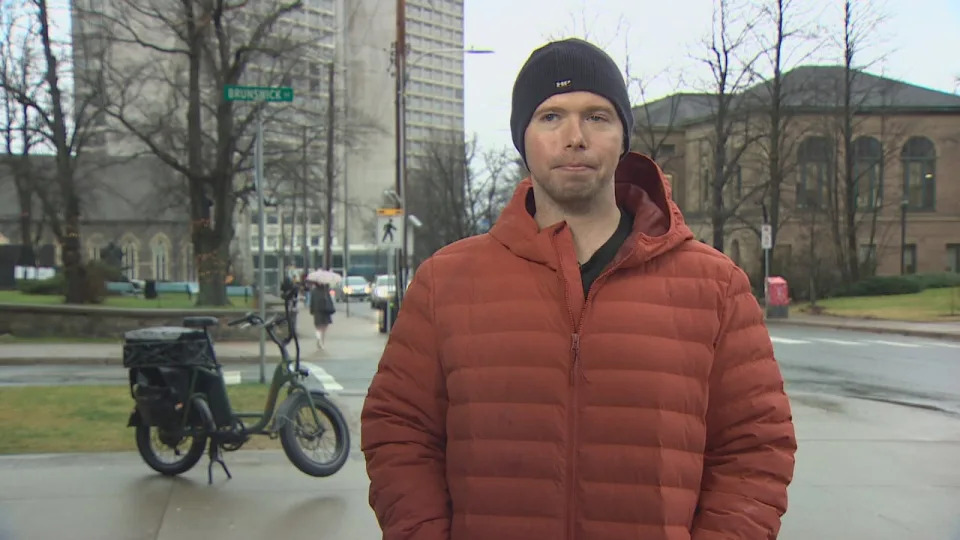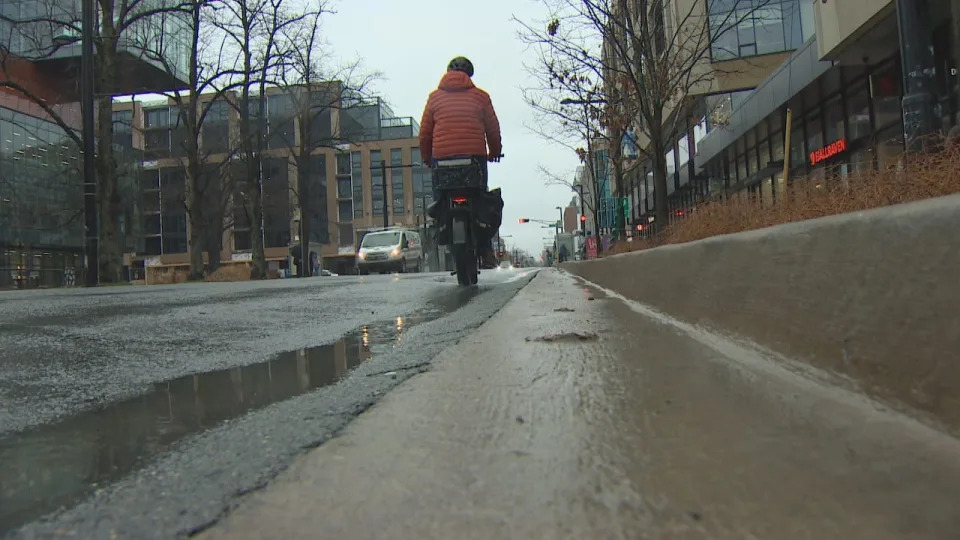CBC
Tue, December 26, 2023

Dr. Kirstin Weerdenburg is an emergency room doctor and avid cyclist.
(Daniel Jardine/CBC News - image credit)
A Halifax trauma expert is calling on the municipal government to address an increase in cycling injuries.
The number of cyclists injured by motor vehicles in Halifax has doubled every year since 2019.
Dr. Kirstin Weerdenburg is an emergency room doctor and avid cyclist. She says the injuries are not only increasing in numbers, but also seriousness.
"As a trauma expert, I started hearing and seeing more people affected by cycling injuries and the people that I saw that were affected by it were having much more severe injuries," she said.
Weerdenburg says it's important to consider the data to find out why this increase is happening.
"There's probably a lot more people on the roads with their bikes, probably a lot more drivers."
She said it's vital to find out whether the infrastructure for drivers and cyclist to share the roads is working effectively and worries not enough focus is put on prevention.
"I don't want to see people come into the emergency department with these injuries and we need to do a much better job."

Kevin Wilson is an advocate for cycling in Halifax. (Daniel Jardine/CBC News)
He says that although aggressive drivers and road rage are threats to cyclists, one of the biggest problems that may be unintentional is distracted driving.
"A lot of times it's just somebody on their phone who maybe doesn't understand what it means to be two inches away from a cyclist. [It] feels a bit like a bullet going past your head … somebody passing you doing 50, when they're within kind of elbow reach," said Wilson.
Wilson also said that from a statistical standpoint, the most common danger faced by cyclists is something they call a right hook. It's when a car passes a cyclist before suddenly taking a right turn in front of them.
"It is definitely something that when you're in a protected bike lane, you do need to be cognizant [of] that they are probably not paying attention," he said.
But Wilson also said he's not deterred from riding the roads despite the safety concerns. He often plans his routes ahead of time to be in protected lanes as much as possible, and recommends the same to other cyclists.

Wilson says he choses his bike routes in advance to avoid more dangerous roads.
A Halifax trauma expert is calling on the municipal government to address an increase in cycling injuries.
The number of cyclists injured by motor vehicles in Halifax has doubled every year since 2019.
Dr. Kirstin Weerdenburg is an emergency room doctor and avid cyclist. She says the injuries are not only increasing in numbers, but also seriousness.
"As a trauma expert, I started hearing and seeing more people affected by cycling injuries and the people that I saw that were affected by it were having much more severe injuries," she said.
Weerdenburg says it's important to consider the data to find out why this increase is happening.
"There's probably a lot more people on the roads with their bikes, probably a lot more drivers."
She said it's vital to find out whether the infrastructure for drivers and cyclist to share the roads is working effectively and worries not enough focus is put on prevention.
"I don't want to see people come into the emergency department with these injuries and we need to do a much better job."

Kevin Wilson is an advocate for cycling in Halifax. (Daniel Jardine/CBC News)
He says that although aggressive drivers and road rage are threats to cyclists, one of the biggest problems that may be unintentional is distracted driving.
"A lot of times it's just somebody on their phone who maybe doesn't understand what it means to be two inches away from a cyclist. [It] feels a bit like a bullet going past your head … somebody passing you doing 50, when they're within kind of elbow reach," said Wilson.
Wilson also said that from a statistical standpoint, the most common danger faced by cyclists is something they call a right hook. It's when a car passes a cyclist before suddenly taking a right turn in front of them.
"It is definitely something that when you're in a protected bike lane, you do need to be cognizant [of] that they are probably not paying attention," he said.
But Wilson also said he's not deterred from riding the roads despite the safety concerns. He often plans his routes ahead of time to be in protected lanes as much as possible, and recommends the same to other cyclists.

Wilson says he choses his bike routes in advance to avoid more dangerous roads.
(Daniel Jardine/CBC News)
"The network is deeply imperfect, but you can use it to get around. Don't be afraid to like, start small, go for smaller scale trips, go on those quiet side streets and then as you feel a bit more confident, scale up as you feel comfortable," said Wilson
Weerdenburg says the approach for prevention should be a collaborative one.
"We all have a shared responsibility at making the roads safer and not putting blame on one versus the other. We're all in this together," she said.
David MacIsaac, the city's active transportation manager, previously told CBC News the Halifax Regional Municipality is aiming to have a more robust cycling network in place in the next two to five years.
In the meantime, he said the city is installing features like speed bumps and curb extensions to shorten the distance cyclists have to travel at crossing streets, as well as speed bumps to slow vehicles down.
MacIsaac said these changes are easy to align with road construction, making the measures more affordable.
"Even if it's not the final product, it should improve things for all road users from a safety perspective and especially people walking and biking," he said.
"The network is deeply imperfect, but you can use it to get around. Don't be afraid to like, start small, go for smaller scale trips, go on those quiet side streets and then as you feel a bit more confident, scale up as you feel comfortable," said Wilson
Weerdenburg says the approach for prevention should be a collaborative one.
"We all have a shared responsibility at making the roads safer and not putting blame on one versus the other. We're all in this together," she said.
David MacIsaac, the city's active transportation manager, previously told CBC News the Halifax Regional Municipality is aiming to have a more robust cycling network in place in the next two to five years.
In the meantime, he said the city is installing features like speed bumps and curb extensions to shorten the distance cyclists have to travel at crossing streets, as well as speed bumps to slow vehicles down.
MacIsaac said these changes are easy to align with road construction, making the measures more affordable.
"Even if it's not the final product, it should improve things for all road users from a safety perspective and especially people walking and biking," he said.
No comments:
Post a Comment